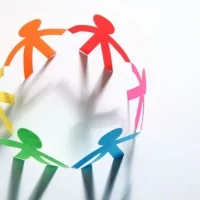Non-Governmental Organizations (NGOs) play a crucial role in addressing social, environmental, and humanitarian issues across the globe. They often operate in challenging environments, relying heavily on donations, grants, and fundraising efforts to sustain their missions. However, many NGOs face significant fundraising challenges that can hinder their ability to deliver impactful programs.
These challenges may include increased competition for donor attention, economic downturns affecting donor capacity, and the evolving landscape of philanthropic giving. As a result, NGOs must continuously adapt their fundraising strategies to ensure they can meet their operational needs and fulfill their missions effectively. In recent years, the landscape of fundraising has shifted dramatically.
Traditional methods such as direct mail campaigns and in-person events are no longer sufficient on their own. Donors are increasingly looking for transparency, engagement, and innovative approaches to giving. This shift necessitates that NGOs not only recognize the need for change but also actively seek out new strategies that resonate with their target audiences.
By understanding the unique challenges they face and the changing expectations of donors, NGOs can position themselves for success in an increasingly competitive fundraising environment.
Identifying the Need for a Fundraising Strategy Pivot
Recognizing the need for a pivot in fundraising strategy is often the first step toward revitalizing an NGO’s financial health. This process begins with a thorough assessment of current fundraising efforts and their effectiveness. NGOs should analyze their existing donor base, evaluate the success of past campaigns, and identify any gaps in funding or engagement.
For instance, if an organization has relied heavily on a single source of funding, such as government grants or corporate sponsorships, it may be vulnerable to fluctuations in that funding stream. By diversifying their funding sources and understanding where their support is coming from, NGOs can create a more resilient financial foundation. Moreover, engaging with stakeholders—including staff, volunteers, and donors—can provide valuable insights into the perceived strengths and weaknesses of current fundraising strategies.
Conducting surveys or focus groups can help gather feedback on what resonates with supporters and what areas may need improvement. For example, if donors express a desire for more transparency regarding how their contributions are utilized, NGOs can pivot their strategies to include more detailed reporting and storytelling about the impact of donations. This collaborative approach not only fosters a sense of community but also empowers NGOs to make informed decisions about their fundraising direction.
Implementing the New Fundraising Strategy
Once the need for a strategic pivot has been identified, the next step is to implement the new fundraising strategy effectively. This process requires careful planning and execution to ensure that all team members are aligned with the organization’s goals. A well-defined action plan should outline specific objectives, timelines, and responsibilities for each team member involved in the fundraising efforts.
For instance, if an NGO decides to focus on major gifts as a new strategy, it may designate specific staff members to cultivate relationships with high-net-worth individuals while providing them with tailored communication and engagement opportunities. Additionally, training and capacity-building initiatives can empower staff and volunteers to embrace the new strategy confidently. Workshops on donor engagement techniques or digital fundraising tools can equip team members with the skills they need to succeed in this evolving landscape.
For example, an NGO that has traditionally relied on in-person events may benefit from training on virtual event planning and execution. By investing in staff development, organizations can enhance their overall effectiveness and adaptability in implementing new strategies.
Leveraging Digital Platforms and Social Media
In today’s digital age, leveraging online platforms and social media is essential for successful fundraising efforts. NGOs can utilize various digital tools to reach wider audiences, engage supporters, and drive donations. For instance, creating a user-friendly website with clear calls-to-action can facilitate online giving while providing potential donors with information about the organization’s mission and impact.
Additionally, integrating donation platforms such as PayPal or crowdfunding sites can streamline the giving process and encourage spontaneous contributions. Social media platforms offer another powerful avenue for engagement and outreach. By sharing compelling stories, impactful visuals, and updates about ongoing projects, NGOs can foster a sense of connection with their audience.
For example, an NGO focused on environmental conservation might share before-and-after photos of restoration projects on Instagram or host live Q&A sessions on Facebook to discuss their work. These interactive elements not only keep supporters informed but also encourage them to share content within their networks, amplifying the organization’s reach.
Engaging with Donors and Supporters
Building strong relationships with donors and supporters is fundamental to successful fundraising efforts. Engaging with these individuals goes beyond simply asking for donations; it involves creating meaningful connections that foster loyalty and long-term support. Regular communication is key—NGOs should keep donors informed about the impact of their contributions through newsletters, personalized emails, or social media updates.
Sharing success stories and testimonials from beneficiaries can help illustrate the tangible difference that donations make. Moreover, recognizing and appreciating donors’ contributions is vital for maintaining positive relationships. Simple gestures such as sending thank-you notes or hosting appreciation events can go a long way in making donors feel valued.
For instance, an NGO might organize an annual donor appreciation dinner where supporters can meet staff members and hear firsthand accounts from beneficiaries about how their contributions have made a difference. By cultivating a culture of gratitude and recognition, NGOs can strengthen their connections with supporters and encourage continued engagement.
Measuring and Analyzing the Impact of the New Strategy
To ensure that a new fundraising strategy is effective, NGOs must prioritize measuring and analyzing its impact regularly. Establishing key performance indicators (KPIs) allows organizations to track progress toward their fundraising goals systematically. These KPIs may include metrics such as donor retention rates, average gift size, or the number of new donors acquired during a specific period.
By analyzing these data points, NGOs can identify trends and make informed decisions about future fundraising efforts. Additionally, conducting post-campaign evaluations can provide valuable insights into what worked well and what could be improved in future initiatives. For example, after a major fundraising event or campaign, an NGO might survey participants to gather feedback on their experience and suggestions for improvement.
This iterative approach not only enhances future strategies but also demonstrates a commitment to continuous learning and growth within the organization.
Lessons Learned and Best Practices for NGOs
As NGOs navigate the complexities of fundraising in an ever-changing landscape, several lessons learned and best practices can guide their efforts. First and foremost, adaptability is crucial; organizations must be willing to pivot their strategies based on emerging trends and donor preferences. Staying informed about industry developments through networking with other NGOs or attending conferences can provide valuable insights into successful practices.
Another best practice is fostering a culture of collaboration within the organization. Encouraging cross-departmental communication between fundraising teams, program staff, and marketing professionals can lead to more cohesive strategies that align with the organization’s mission. For instance, program staff can provide compelling narratives about beneficiaries that fundraisers can use in their outreach efforts.
By working together toward common goals, NGOs can enhance their overall effectiveness.
The Future of Fundraising for the NGO
Looking ahead, the future of fundraising for NGOs will likely continue to evolve alongside technological advancements and changing donor expectations. Embracing innovation will be essential for organizations seeking to remain relevant in this dynamic environment. For example, incorporating artificial intelligence (AI) tools for donor segmentation or predictive analytics could help NGOs tailor their outreach efforts more effectively.
Furthermore, as younger generations become increasingly engaged in philanthropy, NGOs must adapt their strategies to resonate with these new donors’ values and preferences. This may involve emphasizing social justice issues or environmental sustainability in fundraising campaigns or utilizing platforms that align with younger audiences’ digital habits. In conclusion, while fundraising challenges persist for NGOs, there are numerous opportunities for growth and innovation through strategic pivots and engagement efforts.
By embracing change, leveraging technology, and fostering strong relationships with supporters, organizations can position themselves for success in achieving their missions now and into the future.








































